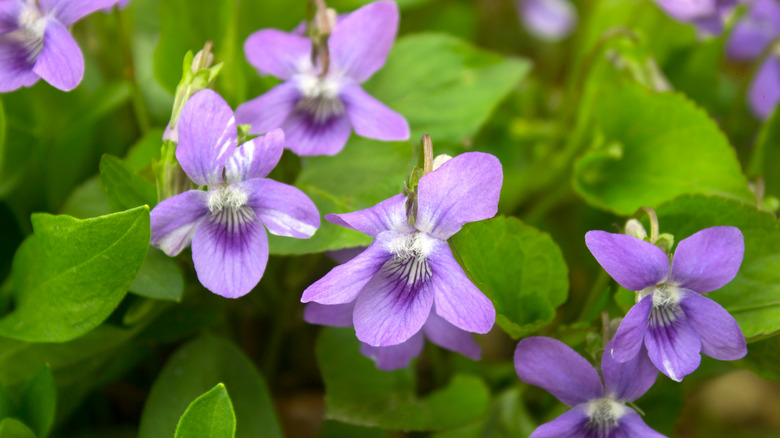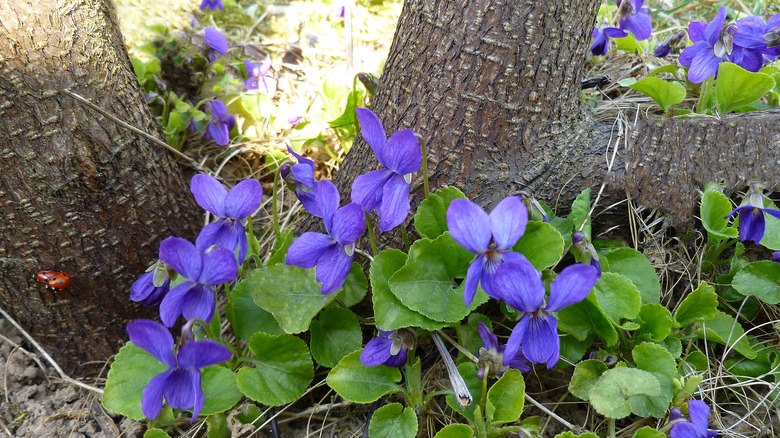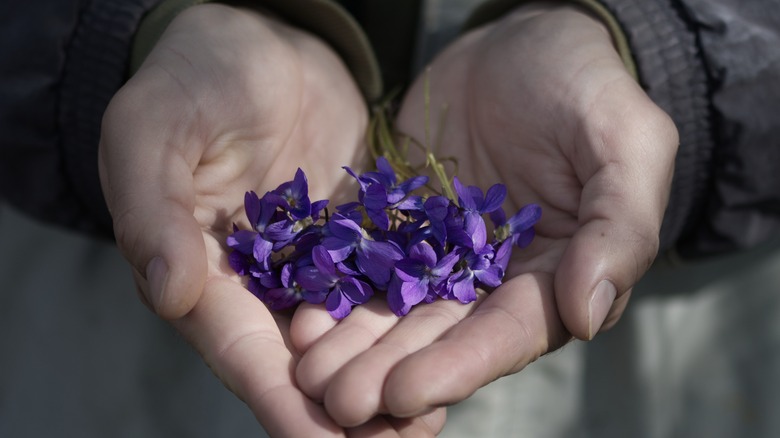Why You Should Consider Using Blue Violet As A Lawn Alternative
Nothing makes it look like you know what you're doing in your yard like sporting a lush green, uniform lawn that has been perfectly mowed and trimmed. It's a matter of pride but it also does wonders for your home's curb appeal, so nobody could blame you if you took quick action after spotting a sprinkle of weeds near your prized lawn. Common blue violets (Viola soraria) look fairly harmless when you first see them in a small cluster but they can quickly spread all over your yard and become nearly impossible to get rid of.
Blue violets are considered an invasive weed because of how fast they spread but also because of how dominant they are despite their shallow roots. Blue violets' roots stay close to the surface of the soil and that means they're more likely to soak up any water or nutrients you put into the soil before your lawn has a chance to access them. You may have tried pulling weeds or using harsher chemical herbicides like Dicamba and 2,4-D in an effort to rid your garden of this weed but blue violets are difficult to get rid of. Instead of putting yourself through the tedious and repetitive work of constantly trying to chase a blue violet infestation and adding harsh chemicals to your soil, consider the potential benefits for you and your yard if you just left your blue violets to flourish, like attracting pollinators and being used in the home.
Welcome blue violets into your lawn's ecosystem
Once you've accepted that trying to get rid of this flowering weed in your garden might be doing more harm than good, you can start appreciating why letting wild violets grow in your yard might not be such a bad thing. Their tiny green leaves remain green all year long, allowing for some color to remain even after your lawn starts developing yellow and brown spots. Even though they compete for water and nutrients in their earlier life, they grow to become resilient and can withstand drought and excess moisture.
Allowing blue violets to grow in your yard can also be beneficial for other plants that will welcome the pollinators they bring. Pollinators are drawn to the sweet fragrance blue violets give off. As they swoop in to pollinate these flowers, they will weave their way throughout your garden and pollinate other plants, too. If you've used herbicides before to try and get rid of blue violets, you've probably also sent the pollinators packing as well but you can rest easy because the bees are sure to be back when you get back to letting nature do its thing. Lawns in shaded areas may struggle to grow, often becoming yellow or only growing in patches. Blue violets are perfect for filling in those patches because they adjust well to shade or partial sun.
Other uses for blue violets
Once your blue violets have started to thrive and are blooming all over your yard in purple, blue, and occasional white litters across your yard, you can finally start reaping the rewards great grass alternatives can bring to your home. Blue violets are surprisingly versatile plants and can be used in a number of ways in the home. Because they grows in such abundance, you never have to worry about how much you pick. You can pick some to keep in a vase that will fill the air with a sweet aroma. It can be dried for use in decorations like potpourri. Blue violet is also popular as a purple tint dye, where it is used to lend beautiful color and fragrance to candles and oils.
Blue violet is also a popular choice as an edible flower. Bakers like to crystallize the flower with sugar to use as a decoration in many desserts. Their petals can be frozen in ice trays to use as an interesting feature in your summer drinks. Beyond its looks, blue violets are also packed with vitamins A and C. They are rich in antioxidants and can provide a boost to your immune system. The leaves are also edible and can be used in salads and soups.


